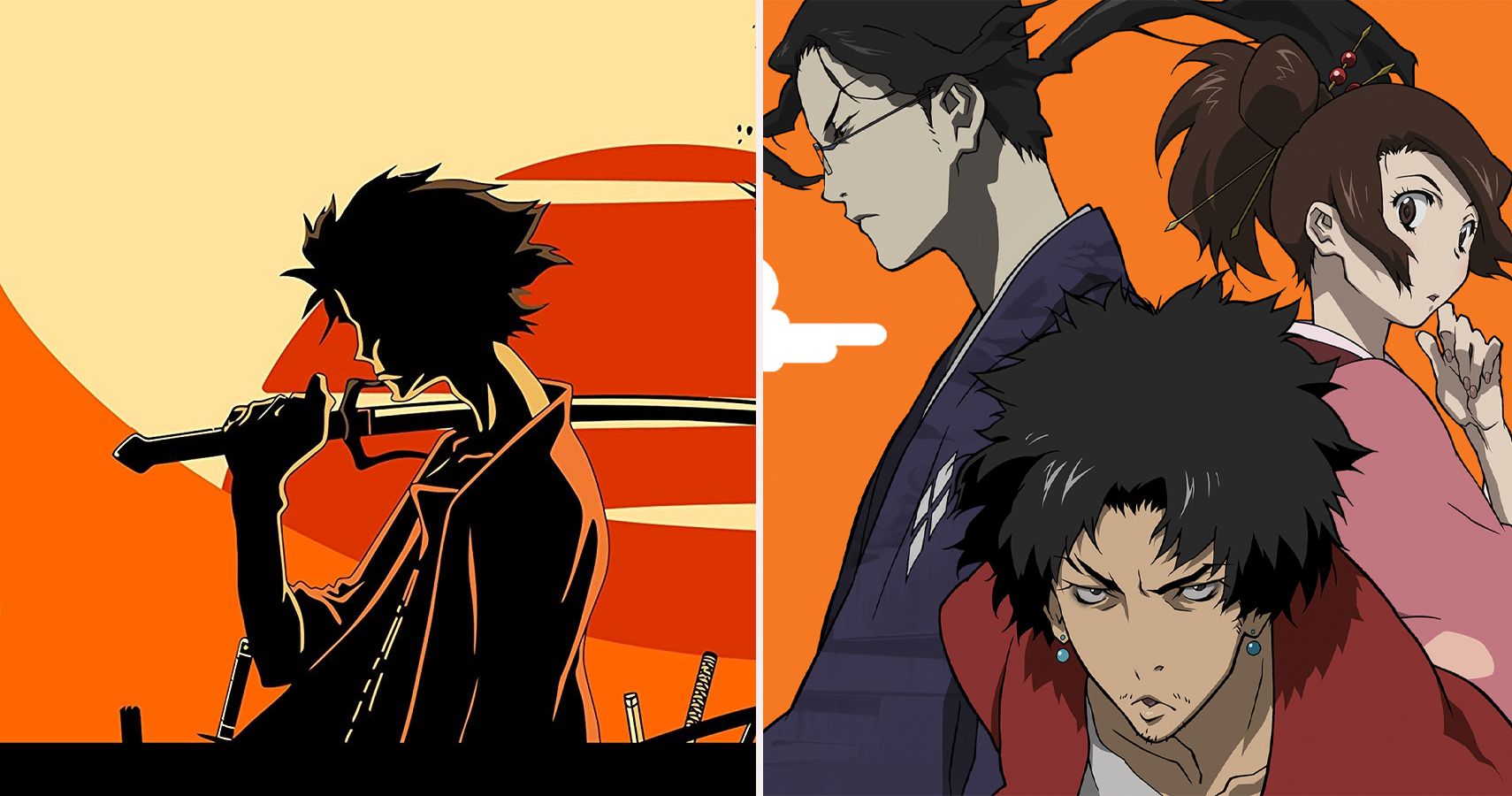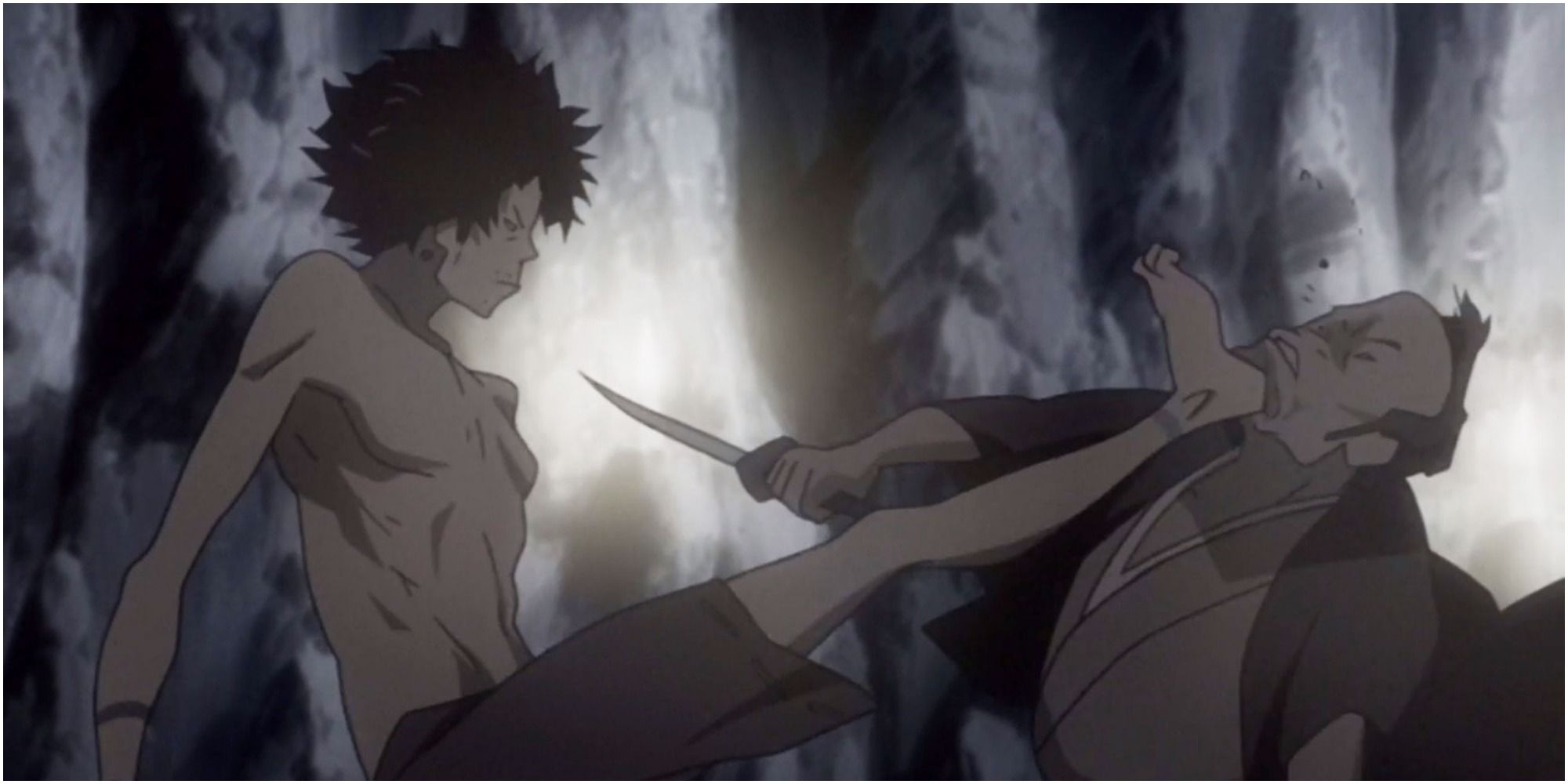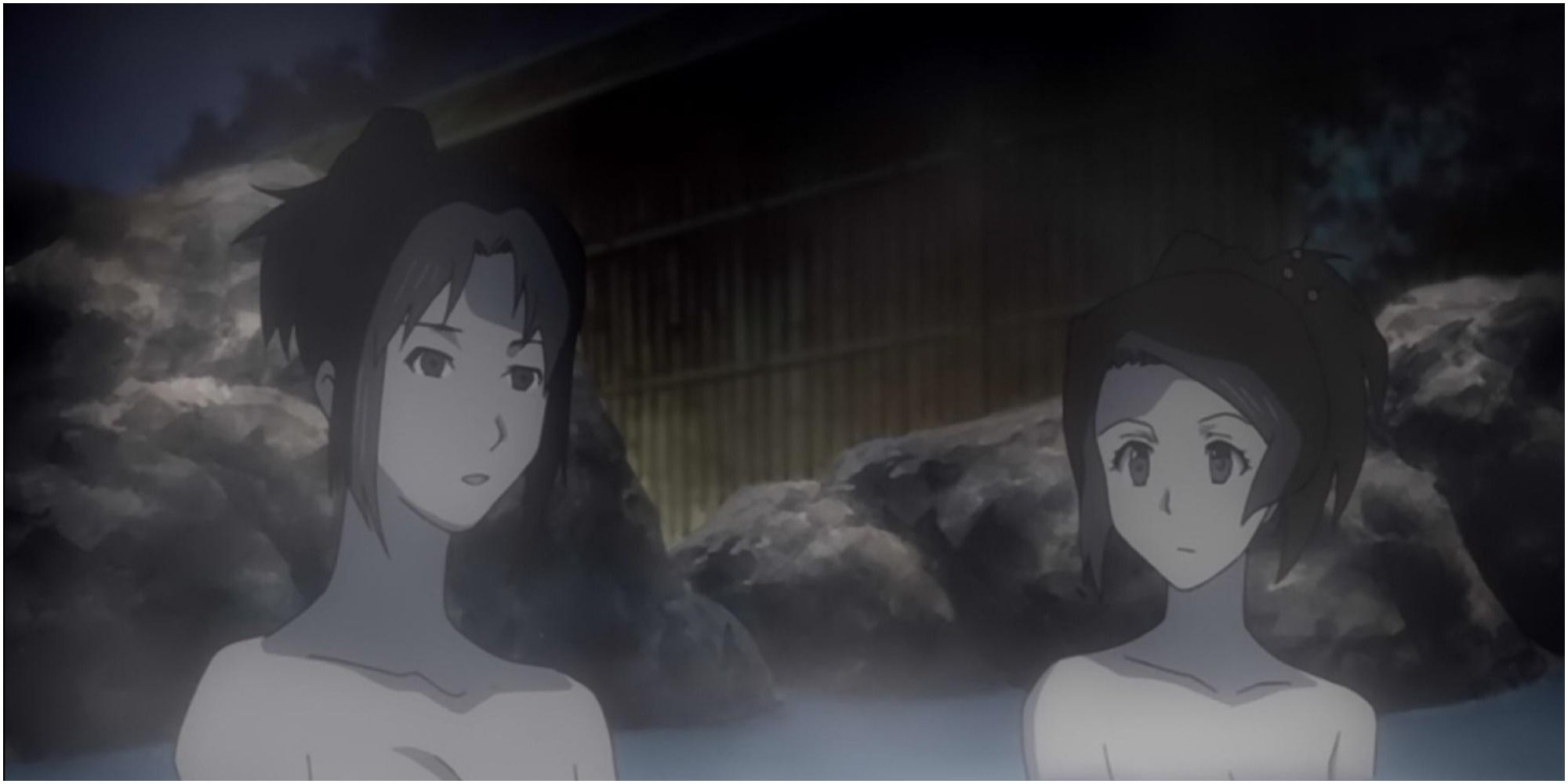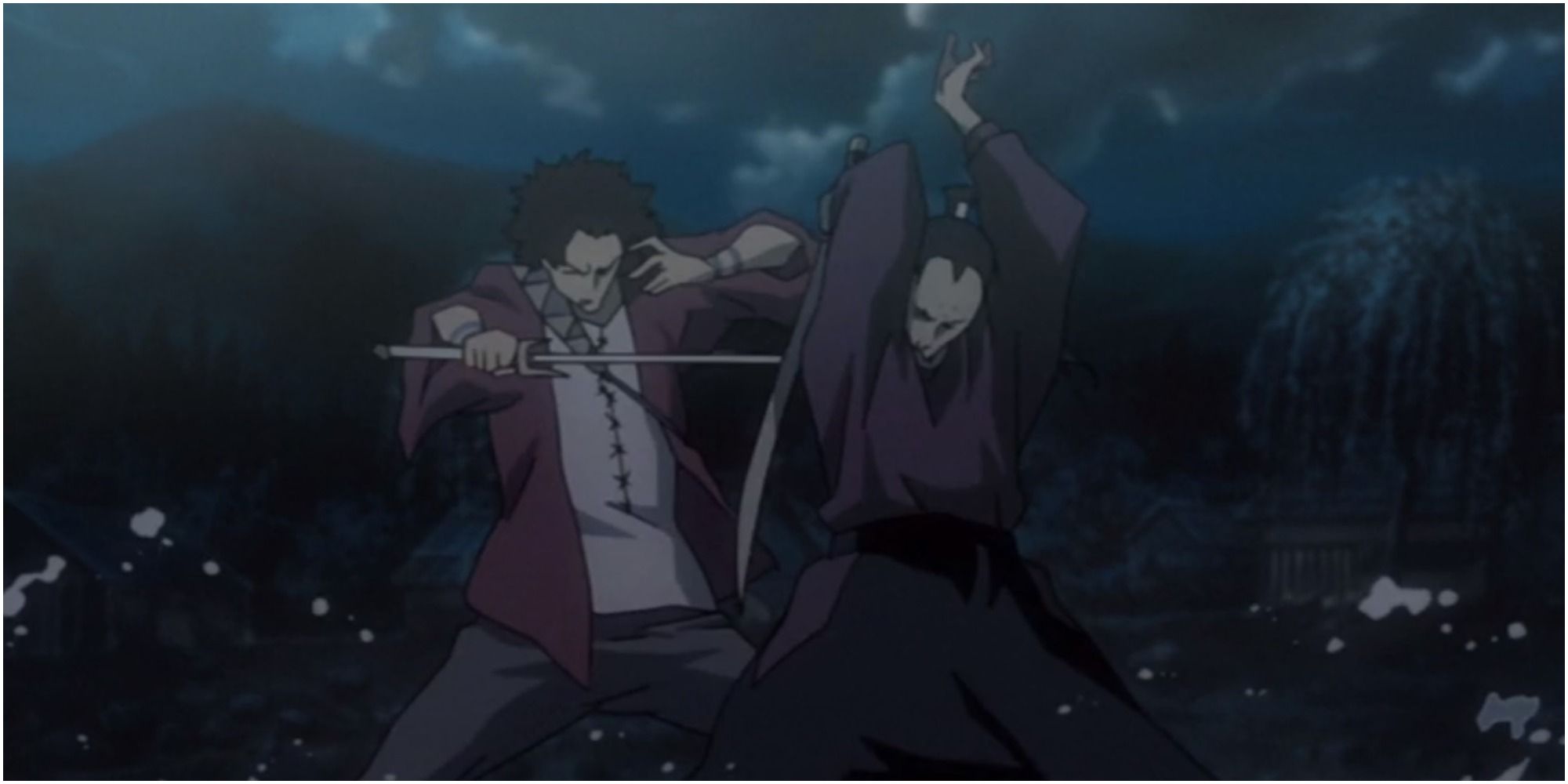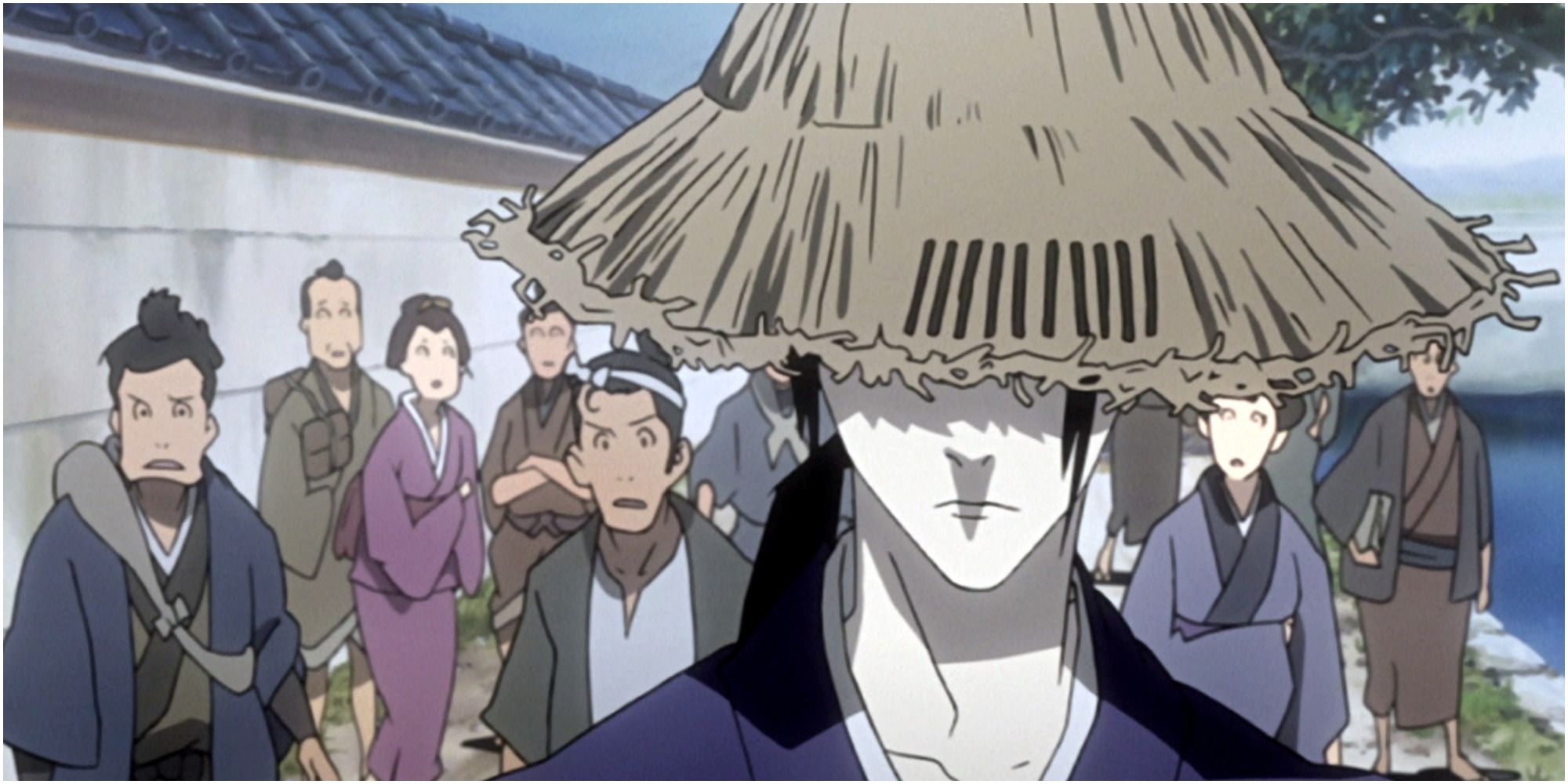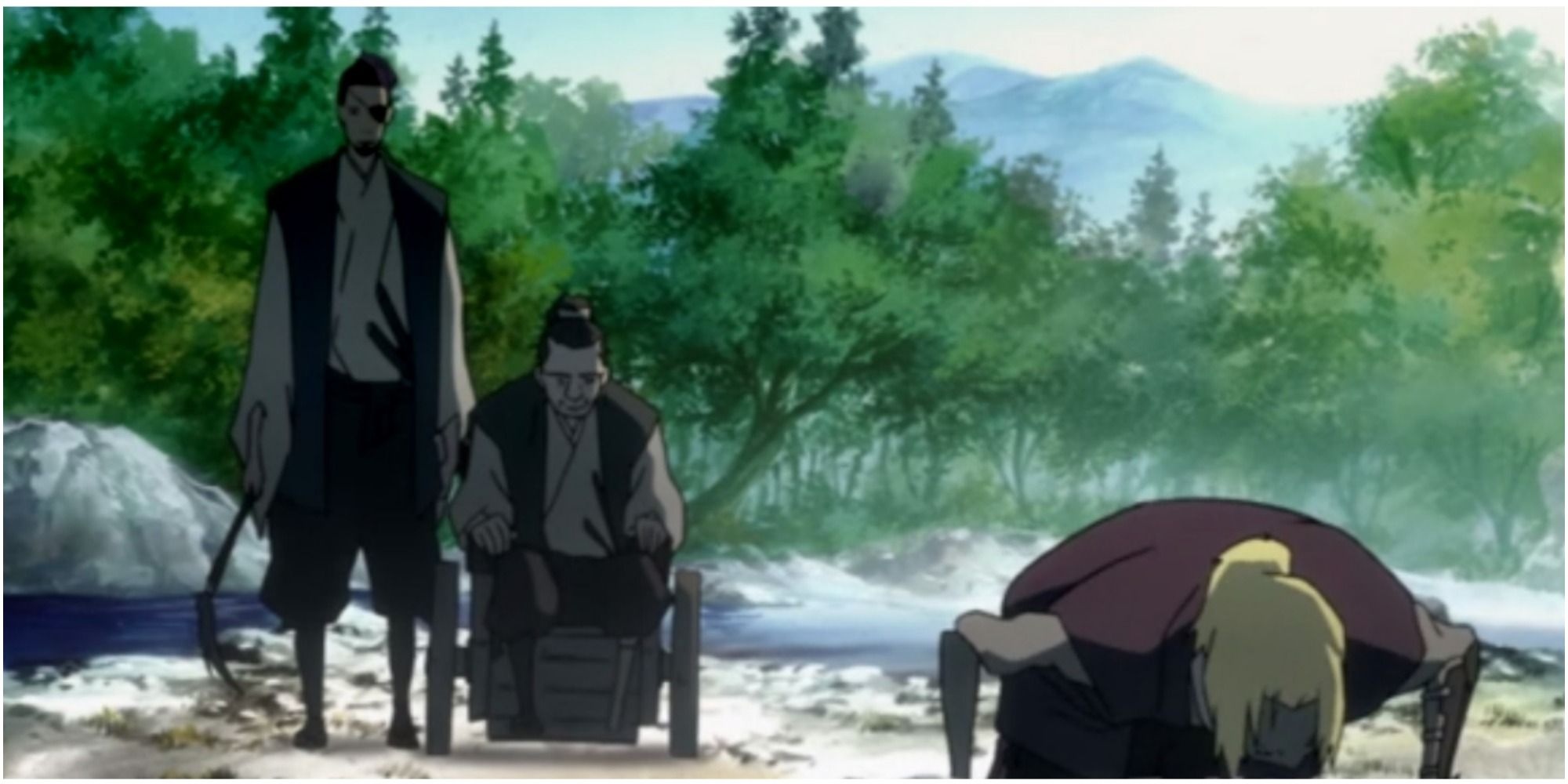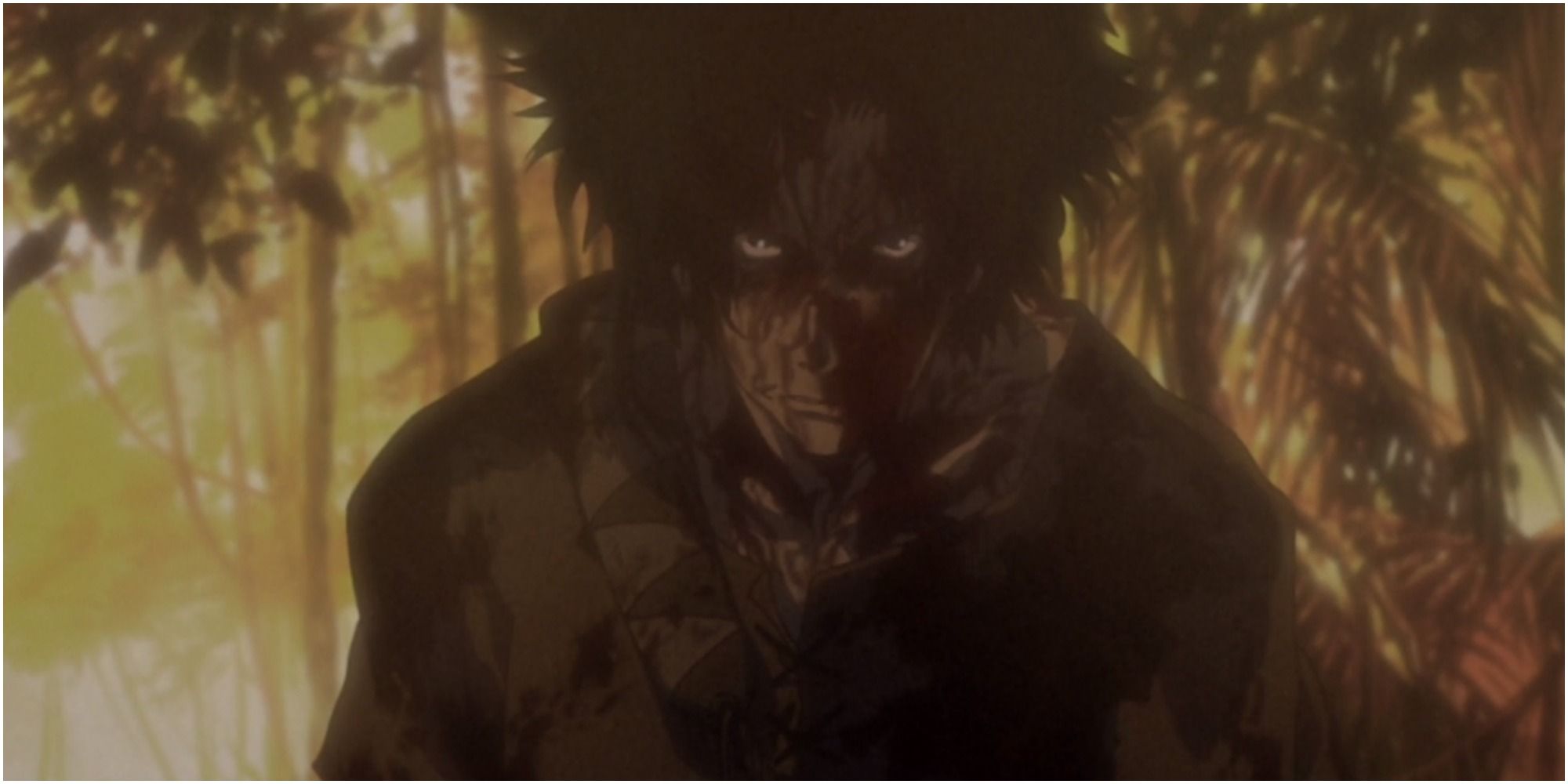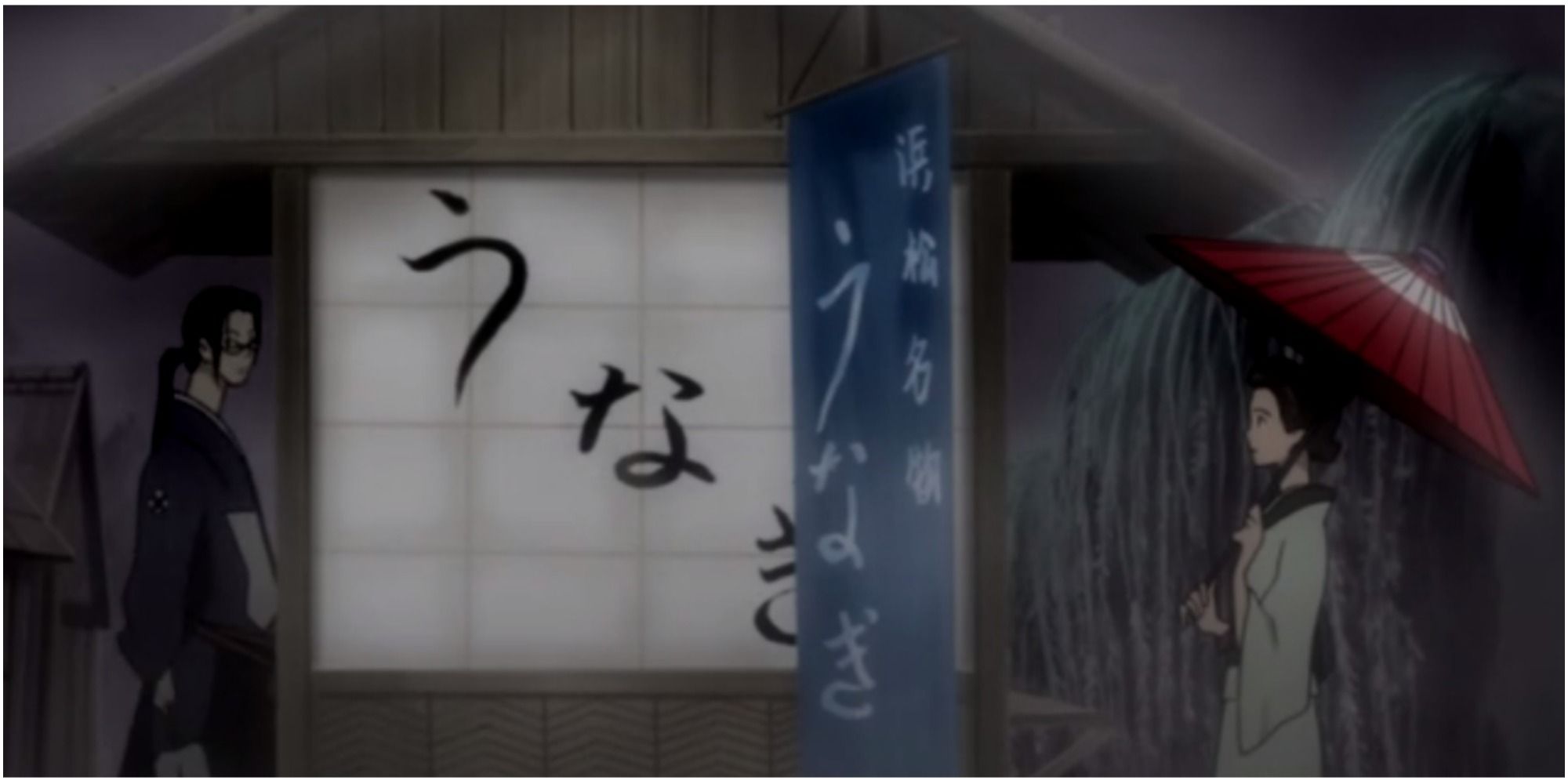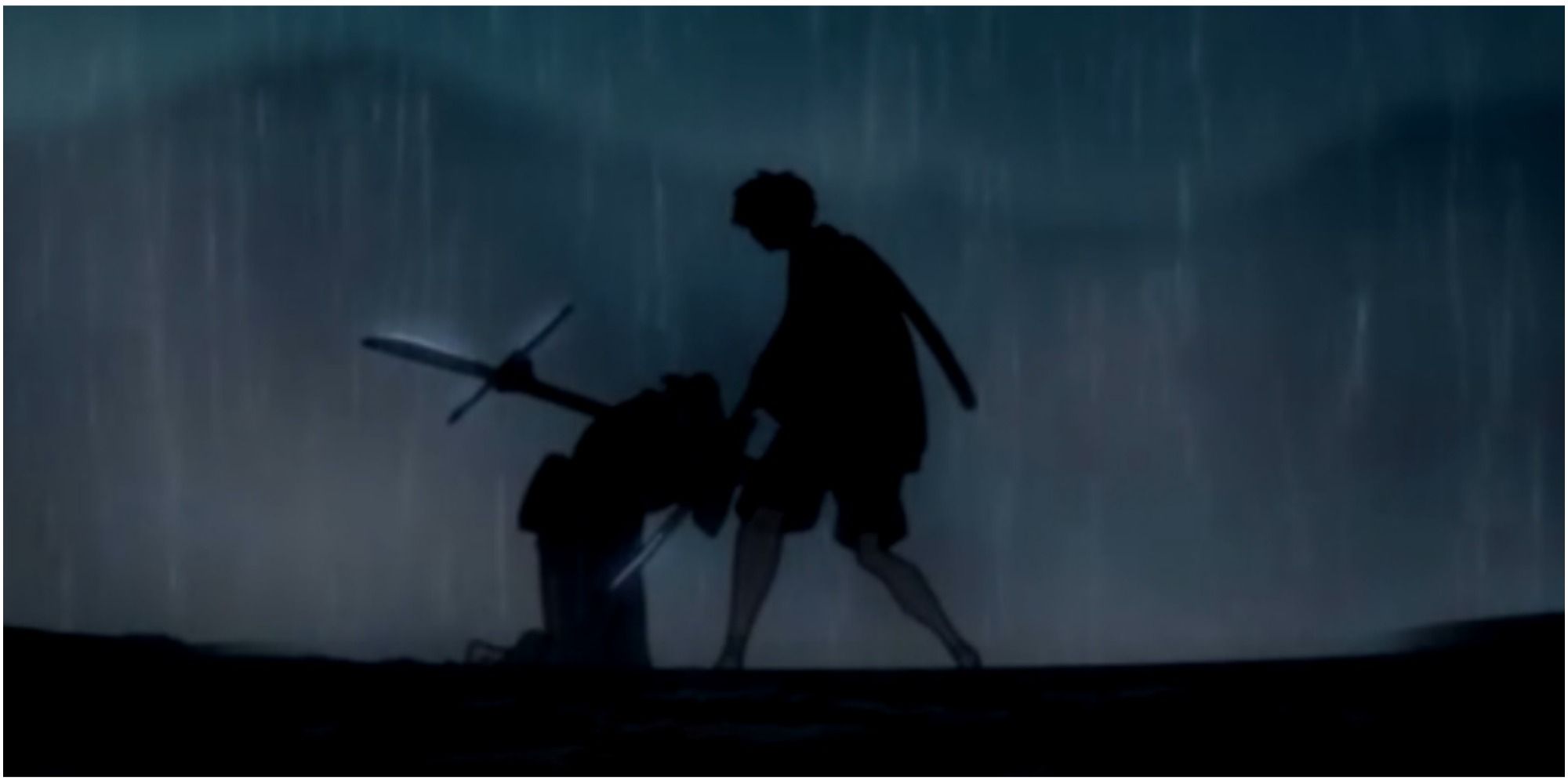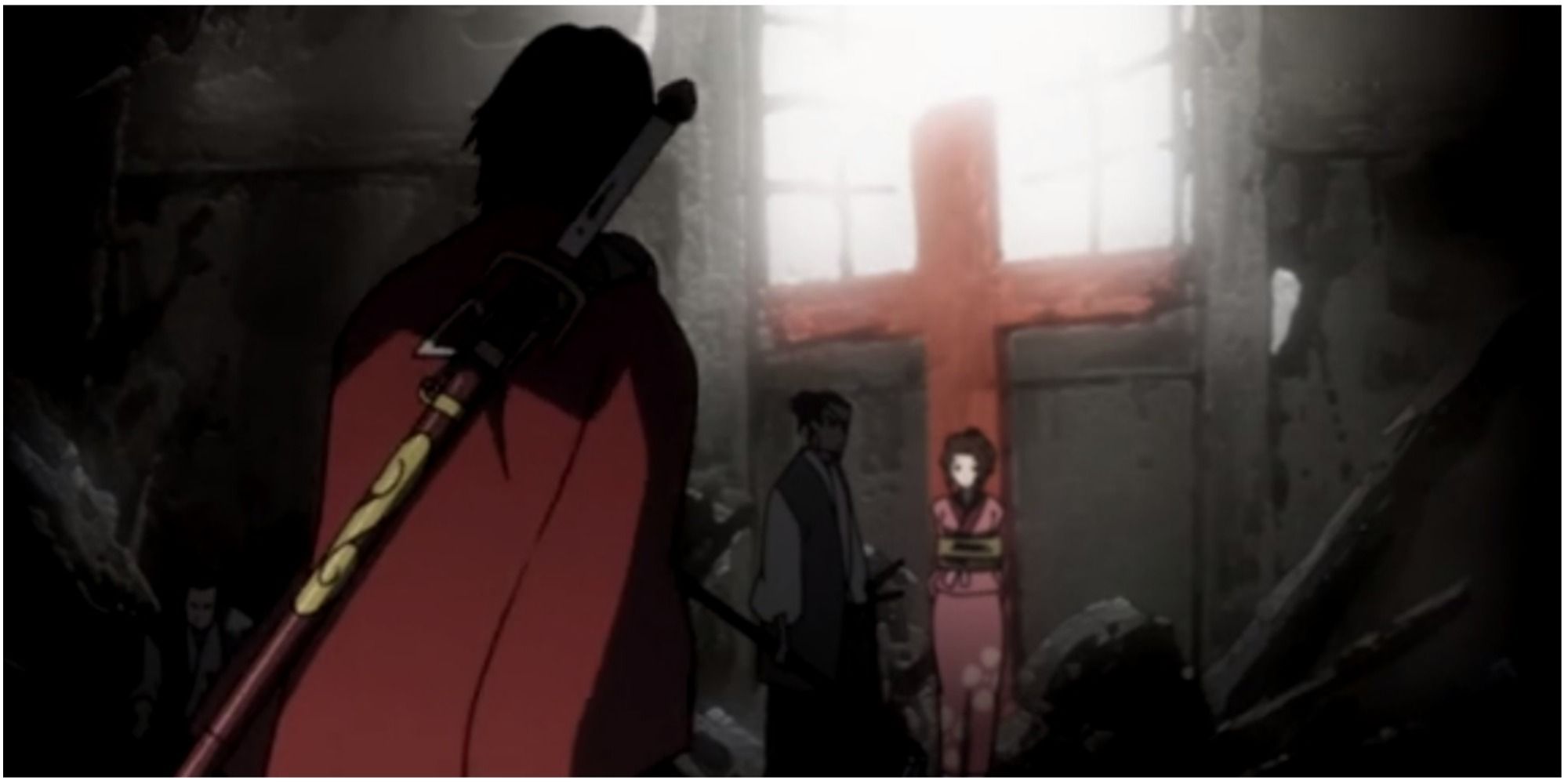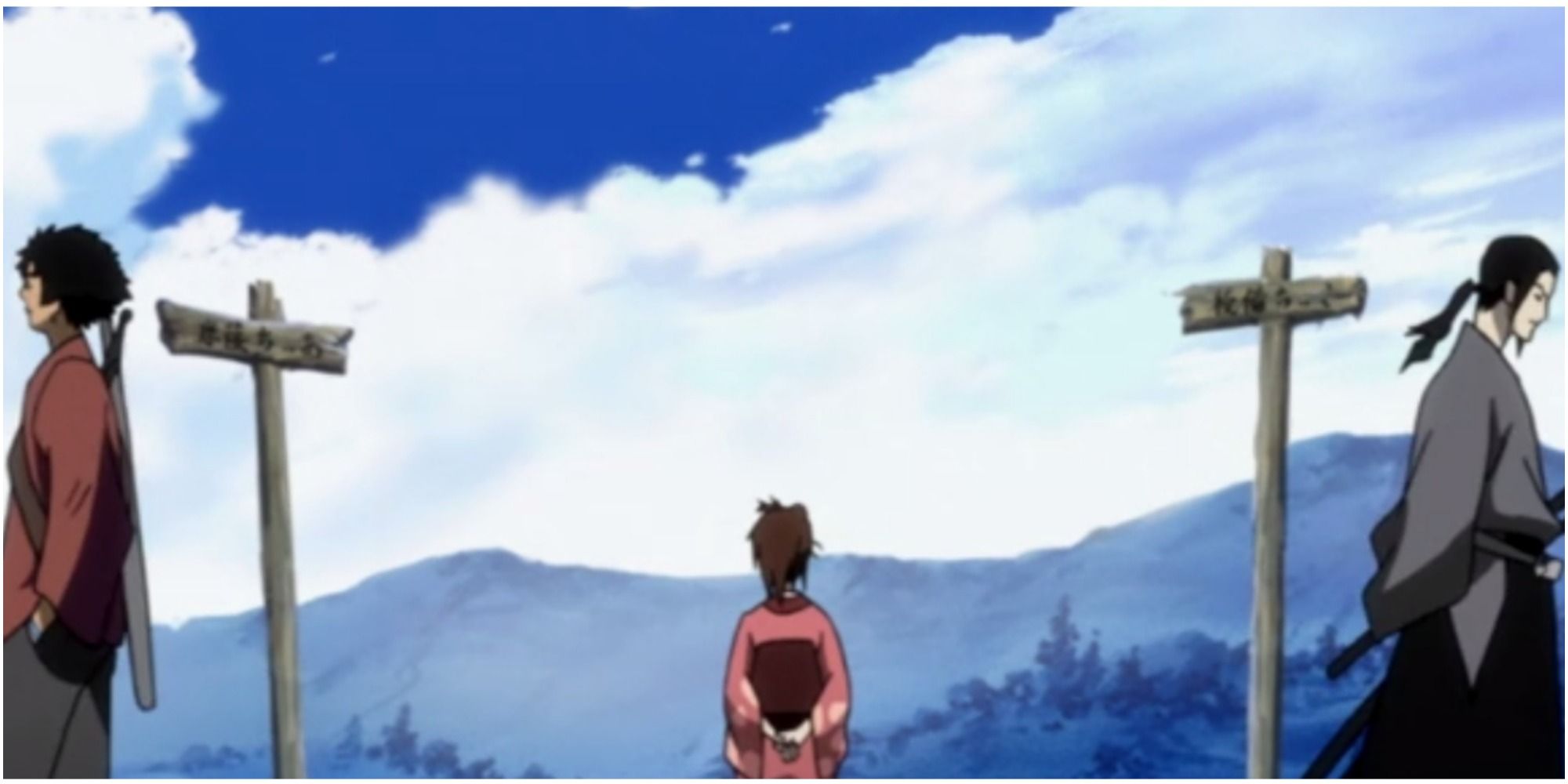There isn't another anime quite like Samurai Champloo. Spearheaded by Cowboy Bebop director, Shinichiro Watanabe, the series blends elements of classic samurai films with elements of hip-hop in order to create something entirely new. Samurai Champloo shares many similarities with the aforementioned Cowboy Bebop, namely its structure that allows for tightly built, episodic stories that play out over the course of a larger overarching narrative.
But not all of these episodes are created equally, and by viewing the ratings these episodes have received on IMDb, it really shows. So without further delay, here are the Top Ten Episodes of Samurai Champloo (According to IMDB). Keep in mind, spoilers ahead!
10 Bogus Booty
Coming in with a 8.2 on IMDb, "Bogus Booty" is a prime example of how comedy can be utilized in moderation across Samurai Champloo's twenty four episodes. The episode incorporates a slew of running gags such as what happens to Fu when she can eat as much as she wants, as well as a plethora of samurai-based slapstick. However, this comedy does not come at the expense of quality and action, as the comedic beats are often implemented and blended into the fight choreography itself, resulting in an energetic and fun episode.
9 Elegy Of Entrapment (Verse One)
While Samurai Champloo draws much of its inspiration from older works in the samurai film genre, few episodes capture the spirit as vividly as the two-part "Elegy of Entrapment."
Landing a 8.3 rating on IMDb, the first half (or verse) of "Elegy of Entrapment" introduces a fourth member into the protagonists, a blind songstress. Immediately, the dynamic of this episode lends itself to a somber tone, as the inevitable division of the characters we've grown to know weighs heavily in the minds of both the characters and the viewers.
8 Lethal Lunacy
When many viewers initially approach a series about samurai, a common expectation is the inclusion of excellent battles between said samurai. "Lethal Lunacy," receiving an 8.3 on IMDb, is an episode that delivers upon that expectation tenfold. As a series primarily grounded in reality, the vast majority of characters possess the same facilities as any normal human being, save for incredible skill with a blade. However, while Lethal Lunacy breaks this mold, presenting a samurai who possesses an otherworldly ability, it allows for Mugen to face an unforgettable foe unlike any other in the series.
7 Tempestuous Temperaments
The first episode of a series is often the key to success in many series. Without an engaging introduction to hook a viewer to a given premise, the first episode can't fall flat. Receiving an 8.4 on IMDb, "Tempestuous Temperaments" is a perfect example of what the first episode of an anime should be.
Setting up character motivations and dynamics while establishing the show's flavor and tone, packing a range of tones within the very first episode.
6 Evanescent Encounter (Part One)
While Samurai Champloo benefits from its episodic nature, telling a myriad of diverse stories, its utilization of multi-part episodes gives the series the ability to give more development and weight to episodes that require more focus. The most notable example of this can be seen in the show's finale, the three-part "Evanescent Encounter." Receiving an 8.5 of IMDb, he first part of "Evanescent Encounter," the episode begins by revealing the underlying forces that have progressed the series thus far, and the ramifications of which they correspond. The episode begins to fill the viewer with a bittersweet melancholy that is pushed into the background by the threat that must finally be addressed.
5 Misguided Miscreants (Part Two)
A recipient of an 8.6 on IMDb, "Misguided Miscreants (Part Two)" features some of the strongest characterization of Mugen in the series. Dealing with the concepts of family and betrayal, this episode features one of the most powerful sequences that the show produced.
Set to the melancholic yet haunting, "Obokuri-Eeumi," we are able to see real introspection of a character who is often presented as apathetic and unfeeling, all without the use of any dialogue.
4 Gamblers And Gallantry
Samurai Champloo is a series that is known primarily for two things: its phenomenal soundtrack and it's prolific fight choreography. With this in mind, one may be shocked to find that one of the most highly regarded episodes of the series is not focused on the aforementioned swordplay, but on romance. Receiving an 8.7 on IMDb, Instead of focusing on comedic beats or combat, the majority of "Gamblers and Gallantry" is comprised of quiet moments between Jin and a young woman who has been forced into slavery. While Jin is often portrayed as a colder and distant character, this episode succeeds at addressing Jin's emotional machinations and ideals. This episode also features a gorgeous score, highlighted by Nujabes's "Counting Stars."
3 Elegy Of Entrapment (Verse Two)
Landing an 8.8 on IMDb, the latter verse of "Elegy of Entrapment" shifts the perspective from that of Jin to Mugen while building upon the framework established in the episode prior. As the episode progresses and we learn more of the blind songstress, Sara, the viewer is able to empathize with her despite her betrayal of the group.
This dynamic allows for Sara to become the most rounded and developed antagonist in Samurai Champloo, with the episode culminating in one of the most engrossing fight sequences the series has to offer.
2 Evanescent Encounter (Part Two)
Coincidentally, the second highest rated episode of Samurai Champloo (receiving an 8.9 on IMDb) happens to be the second to last episode in the series. Progressing from Evanescent Encounter (Part One), the group that we've grown to love over the course of the series is splitting apart (whether they like it or not), with each of the three protagonists approaching what they've been searching for across the length of the series: truly worthy opponents and the "Samurai Who Smells of Sunflowers."
Everything from the directing, to fight choreography, to the music is cranked up to eleven in this episode.
1 Evanescent Encounter (Part Three)
Coming in with a 9.1 on IMDB, it isn't hard to see why the last episode of Samurai Champloo is one of the most highly regarded. This episode is composed of two key ingredients: finality and subversion. Across the entirety of the series, there have been key motivations driving the story forward such as Fuu's search for "The Samurai Who Smells of Sunflowers," and Mugen and Jin's desire to best one and other in combat once they've assisted Fuu. By the time that this episode reaches its conclusion, all that the protagonists have set out to do have been accomplished, yet the details surrounding these completed objectives are far removed from what one would expect, yet they feel earned and satisfying all the same.

